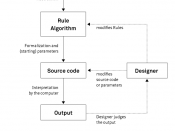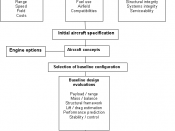PRINCIBLES
OF
DESIGN
The Principles of Design can be thought of as the tools applied to create innovative and unique designs. Principles of design are:
Balance
Proportion
Rhythm
Emphasis
Contrast and Harmony
Unity
Balance
Balance occurs when the visual weights of the parts of a design are equally distributed so as to create equilibrium.
Balance in design may be Formal or Informal. It can also be Horizontal, Vertical and Radial.
Formal Balance is symmetrical and is either repeated or a mirror image.
Predictable, stable, serene
Encourages comparison of one side to the other
Informal balance is asymmetrical both sides of the access are equal but not identical
More exciting
Eye moves over the design
Horizontal Balance left and right sides of central lines are equal.
Vertical Balance upper and lower parts of the design are equal.
Radial Balance all sides of the central point are equal.
Proportion
Proportion is the way all the parts in a design relate to each other individually and to the design as a whole.
Proportion is determined by distances, sizes, amounts, degrees or parts.
The Golden mean is accepted throughout the western world as being the ratio of perfect proportion. It is useful because it provides a mathematical means of dividing a design into balanced segments.
The golden mean is based on the proportions of 3:5:8 or 5:8:13. This ratio relates well to the female form. The ideal figure is approximately 8 heads tall, with the natural waistline falling at 3/8 and the leg length at 5/8.
Proportion can be a vertical division or a horizontal division of the body. By changing the proportion of a garment, figure problems can be corrected.
For example:
A long body and long legs can be adjusted by wearing belts and waistlines on the lower hip...


